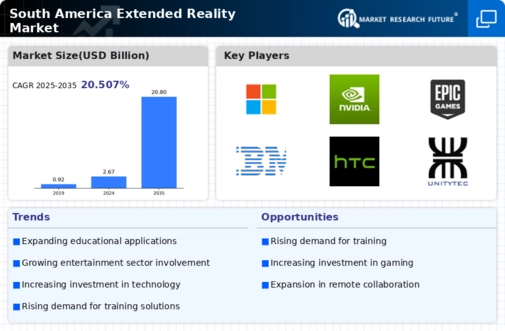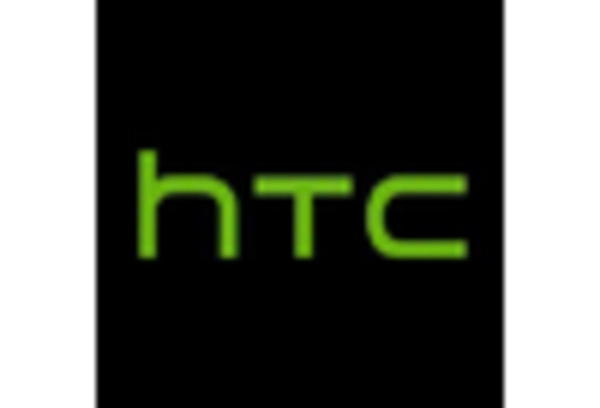Investment in Digital Infrastructure
Investment in digital infrastructure is a critical driver for the extended reality market in South America. Governments and private sectors are increasingly recognizing the importance of robust internet connectivity and data centers to support immersive technologies. As of 2025, several countries in the region are investing heavily in 5G networks, which are essential for delivering high-speed, low-latency experiences. This infrastructure development is expected to enhance the performance of extended reality applications, making them more viable for businesses and consumers alike. The extended reality market stands to benefit significantly from these investments, as they facilitate the deployment of innovative solutions across various sectors, including education and entertainment.
Cultural and Creative Industry Growth
The cultural and creative industries in South America are increasingly embracing extended reality technologies. Artists, filmmakers, and designers are exploring immersive storytelling and interactive experiences, which are gaining traction among audiences. This creative exploration is not only enhancing cultural expression but also driving economic growth within the extended reality market. As of 2025, the revenue generated from AR and VR applications in the creative sector is expected to reach approximately $500 million, reflecting a growing recognition of the potential of these technologies. This trend suggests that the extended reality market will continue to evolve, fostering innovation and collaboration across various creative fields.
Technological Advancements in Hardware
The extended reality market in South America is experiencing a surge due to rapid advancements in hardware technology. Innovations in headsets, sensors, and computing power are making immersive experiences more accessible and affordable. For instance, the introduction of lightweight, high-resolution headsets has enhanced user experience, leading to increased adoption across various sectors. The market for augmented reality (AR) and virtual reality (VR) devices is projected to grow at a CAGR of approximately 30% from 2025 to 2030. This growth is likely to be driven by the demand for high-quality immersive experiences in gaming, training, and simulations, thereby propelling the extended reality market forward.
Growing Interest in Remote Collaboration
The rise of remote collaboration tools is influencing the extended reality market in South America. As businesses adapt to hybrid work models, there is an increasing demand for immersive solutions that enhance virtual meetings and teamwork. Extended reality technologies offer unique opportunities for interactive collaboration, allowing teams to engage in a shared virtual space. This trend is likely to drive the adoption of extended reality applications in corporate environments, with projections indicating a potential market growth of 25% by 2027. The extended reality market is thus positioned to capitalize on this shift, providing tools that improve productivity and communication in remote settings.
Increased Focus on Training and Simulation
The extended reality market in South America is witnessing a heightened focus on training and simulation applications. Industries such as manufacturing, healthcare, and aviation are increasingly utilizing immersive technologies to enhance training programs. By providing realistic simulations, organizations can improve skill acquisition and retention among employees. As of 2025, the market for training solutions utilizing extended reality is projected to grow by 40%, driven by the need for effective and engaging training methods. This trend indicates that the extended reality market is likely to play a pivotal role in transforming traditional training paradigms, making them more efficient and impactful.


















Leave a Comment